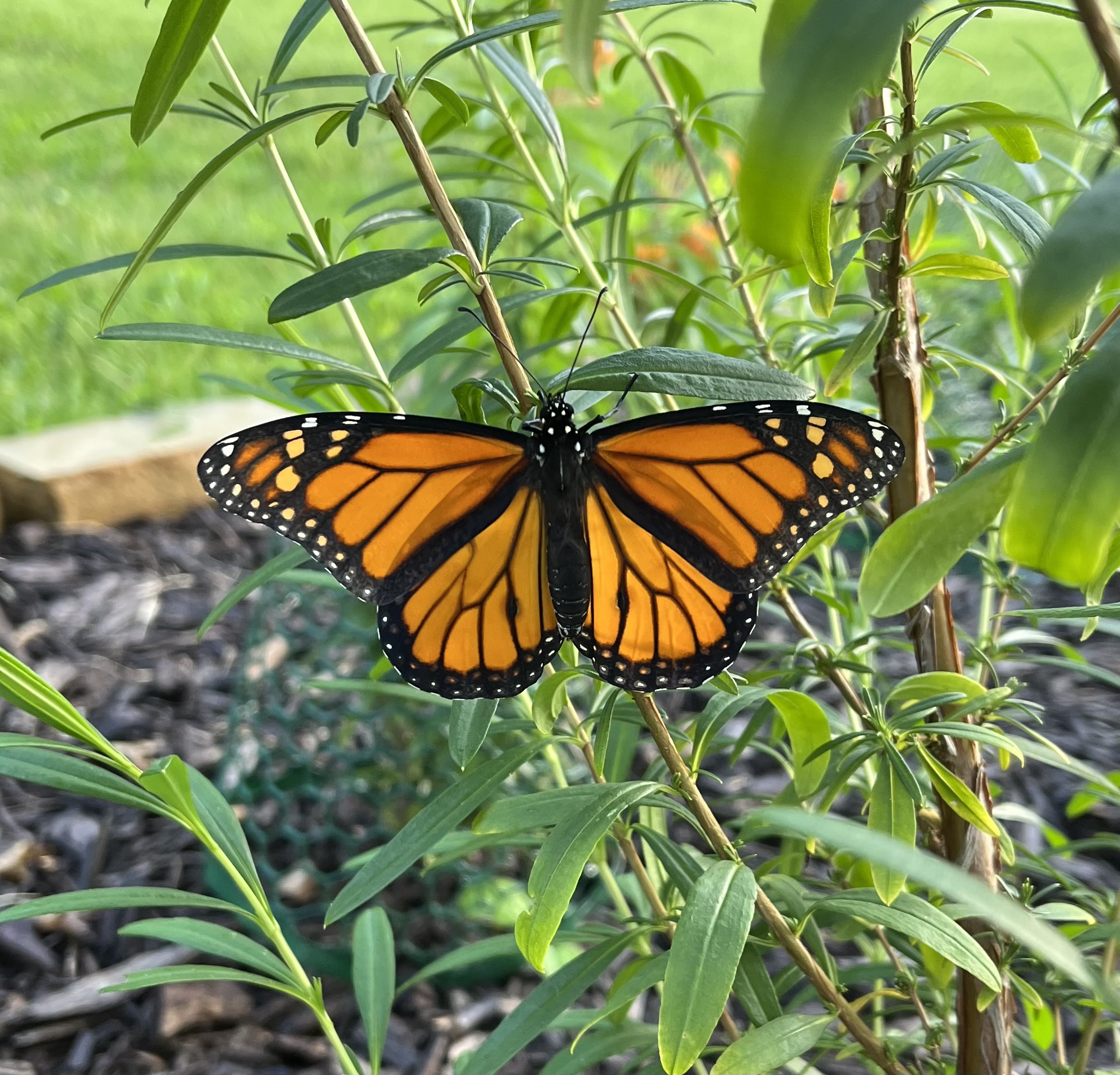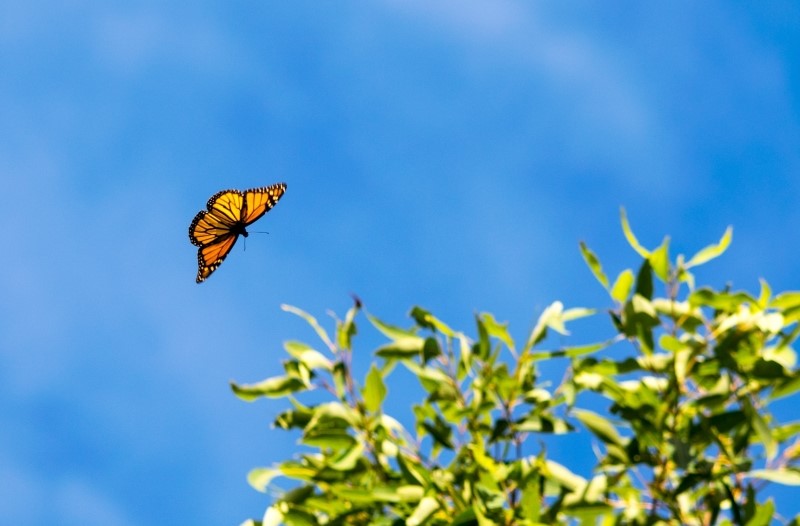By Ginny Varraveto, contributed by Johnson County Extension
Did you know that each fall the Kansas City area has the chance to witness one of North America’s most incredible natural phenomena?
From August through November, millions of monarch butterflies migrate through the region on the way to Mexico. It is the final leg of a multigenerational relay of monarchs that begins months earlier in the spring.
The butterflies emerge from forests near Mexico City and as the weather warms, they journey north to the United States. Some of their offspring travel all the way to Canada by summertime.
As summer fades into autumn, the monarch migration passes back through the lower Midwest heading south toward Mexico. Some individuals fly an astounding 3,000 miles to reach their destination.
It typically takes four generations of butterflies to complete the round-trip journey and the last generation achieves an astonishing feat of resilience. Not only do they fly all the way to the overwintering grounds in Mexico, but those that survive the winter return north (usually to Texas) the following spring to lay eggs and kick off a new round of migration. Some of the monarchs seen in the Kansas City area in September and October are part of this remarkable group.
Gardeners delight as early signs of the migration arrive. Fat caterpillars sporting bold black, yellow, and white stripes happily chomp away on clusters of orange butterfly weed and other milkweed plants. For such hungry visitors, monarch caterpillars are picky eaters. Not just any garden will do, because monarch caterpillars feed exclusively on milkweed plants. They devour the leaves and flowers—a welcomed sight for gardeners hoping to attract and support monarchs.

A newly emerged monarch on St. John’s Wort. When an adult monarch emerges, it takes a few hours for its wings to dry and harden before it can fly.
Local entomologist Betsy Betros has been observing insects since she was a child. Her book, “A Photographic Field Guide to the Butterflies in the Kansas City Region,” recommends tips for rearing caterpillars and gardening for butterflies. It describes 100 species of butterflies seen in the Kansas City area including monarchs. Betros documents the complete metamorphosis of a butterfly from egg to caterpillar to adult, noting that most adult butterflies live only a few weeks. A few species, like the monarch, are much longer lived because they overwinter as adults. Though Betros is now retired she continues to watch and photograph bugs on her five acres near Lawrence, Kansas. Studying insects, she says, is an endless source of fun.
Observing and enjoying the monarch’s fall migration is not limited to gardeners and scientists. Each year the Johnson Country Extension Master Naturalists invite the public to participate in the Hasta Luego Monarchs event at the Pollinator Prairie in Olathe.
The free event on September 30 will feature educational exhibits, games, arts, and crafts and is hosted in association with Monarch Watch, a nonprofit organization focused on education, conservation, and research. Attendees can learn about the fascinating lifecycle of the monarch and take part as Monarch Watch tags and releases butterflies bound for Mexico.
Monarch Watch also raises awareness about how critical habitat loss and climate change are impacting monarch populations. In July 2022, the International Union for Conservation of Nature officially designated the migratory monarch butterfly as endangered, noting a decline in population of about 20 to 70 percent in the last ten years. The US Fish and Wildlife Service has identified the monarch as a candidate species for listing under the protection of the Endangered Species Act and continues to review its status each year.
Monarch butterflies face many obstacles which means there is much to do to help them survive. Avoiding the use of herbicides and pesticides and protecting and restoring the plants and habitat they rely on can make a difference.
The event at the Pollinator Prairie on September 30 also includes a native plant sale. Incorporating native plants, like milkweed and nectar flowers into landscapes is a great way for individuals and communities to support monarchs. It is also a front row ticket to greet future monarch migrations and experience the joy of welcoming one of nature’s most captivating creatures.
The Johnson County Extension Master Naturalists and Monarch Watch invite everyone to say, “hasta luego” or “see you later,” to the monarchs, with hopes that they continue coming back again each year.
Attend the Hasta Luego Monarchs event at the Pollinator Prairie in Olathe to interact with experts and witness one stop along the monarchs’ incredible journey south.
To learn more about monarch butterflies and what you can do to help visit monarchwatch.org.




